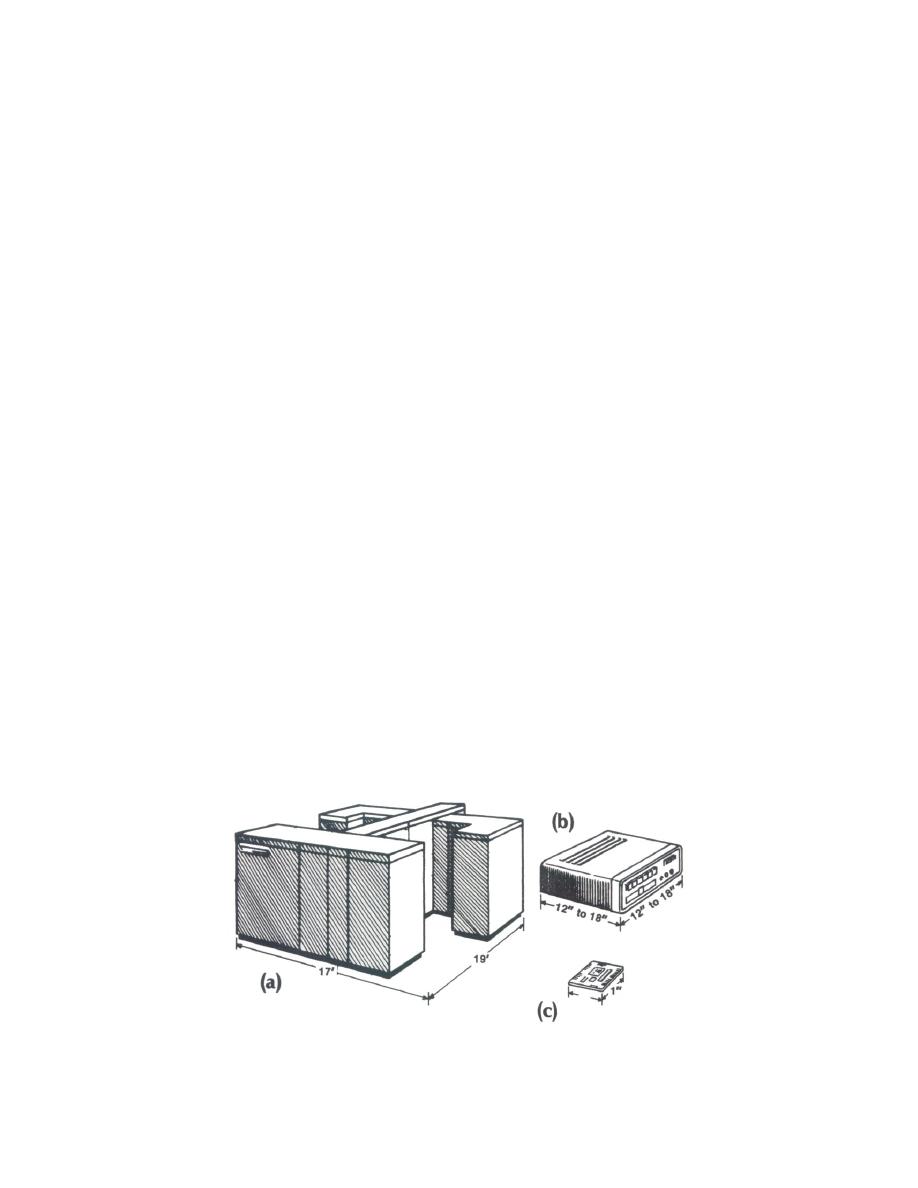
miniaturization and efficiency. For example, floppy disks or diskettes (smaller versions
of the large-scale disk storage device) have slower access time and less capacity. And
usually, the smaller and less expensive the computer, the smaller and less expensive
and input-output peripherals. Other devices, like the video display, though totally
electronic (except for parts of the keyboard), must be equipped with a screen and
keyboard large enough for human eyes and fingers. Consequently, video display input
devices have remained virtually identical to those used on larger computer systems.
3-19. MAINFRAMES
a. Description. The mainframe or maxicomputer, the largest class of computer
systems, is capable of handling hundreds of users simultaneously and performing
millions of calculations per second. The term mainframe actually refers to the CPU,
which is the heart of any large-scale computer system. A mainframe can process large
amounts of data at very high speeds, hold up to millions of characters in primary
storage, and support many input, output, and auxiliary storage devices. Vendors sell
mainframes to large banks, universities, or corporations.
mainframe computer (maxicomputer): full-scale computer.
b. Now a Mainframe Is Used. Eastern Airlines' reservations computer system
is based in Miami. The Eastern mainframe system handles 165 reservations messages
per second on a reservations network that links 6000 terminals located throughout the
U.S. A seat is booked by removing it from available status and collecting passenger
information through on-line real time processing. Besides reservations processing,
airlines use computers for inventory control, flight scheduling, onboard navigation,
maintenance, computer-controlled radar and business (personnel, payroll, finance).
c. Market Trends. In recent times, the mainframe has lost part of its share of
the market. This is partly due to the fact that the cost of hardware has been declining at
a rate of 15 to 20 percent per year, while software and services costs have continued to
increase significantly. Another contributing factor is the trend toward smaller, more
flexible systems and away from large central-site computer systems.
Figure 3-10. Relative sizes of the primary memory of: (a) mainframe,
(b) minicomputer, and (c) microcomputer.
MD0057
3-16


 Previous Page
Previous Page
